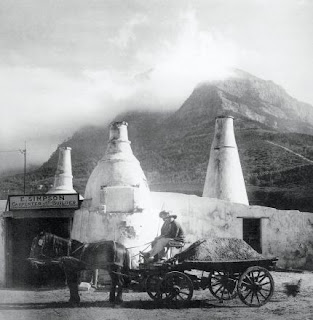A compilation of a series of historical photos, showing the growth of Cape Town. It's amazing to see how things have changed and developed into the town we know affectionately as the Mother City. Enjoy this journey back in history.
 |
| Orange Street, Cape Town in 1870 |
 |
| The beach that used to be in Woodstock. This photo was taken in 1899 |
 |
| The naval base of Simon's Town in 1900 |
 |
| Welgemeend is one of the oldest surviving houses in Cape Town and was built in Gardens in 1700. This photo was taken in 1901 |
 |
| The lime kilns in Mowbray in 1910, with Table Mountain in the background |
 |
| The Old Pier was completed in 1910 and became a popular spot for Capetonians. This picture was taken in 1911 |
 |
| The USS Huntington arrives to a very desolate foreshore in 1948. The foreshore was built in 1945, but due to the economic climate after the war, it took a while to be properly utilized |
 |
| The view from Blouberg in 1950 |
 |
| Kloof Road en-route to Glen Beach in 1953 |
 |
| The first Cape Argus cycle tour took place in 1978, with 525 people taking place |


